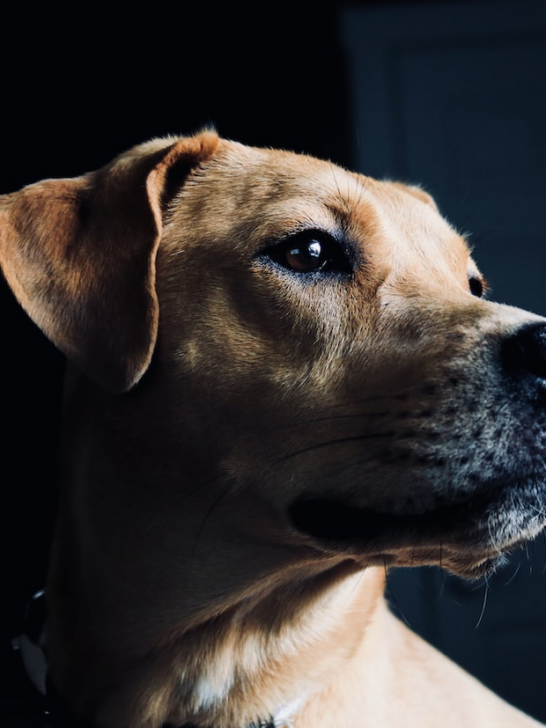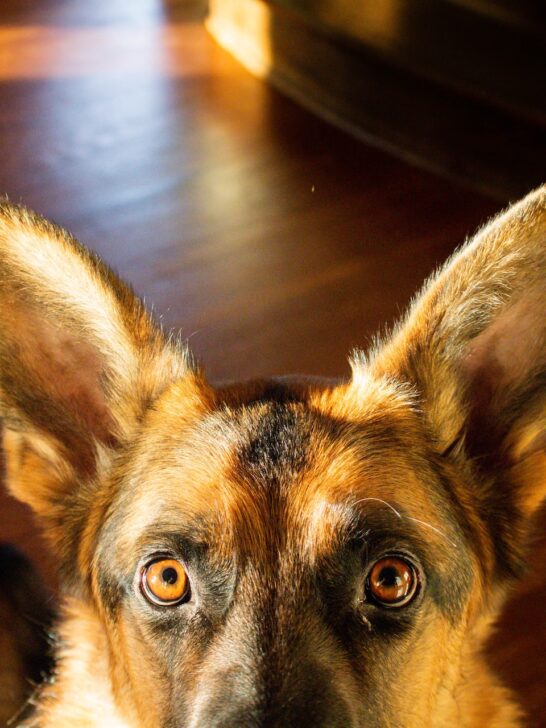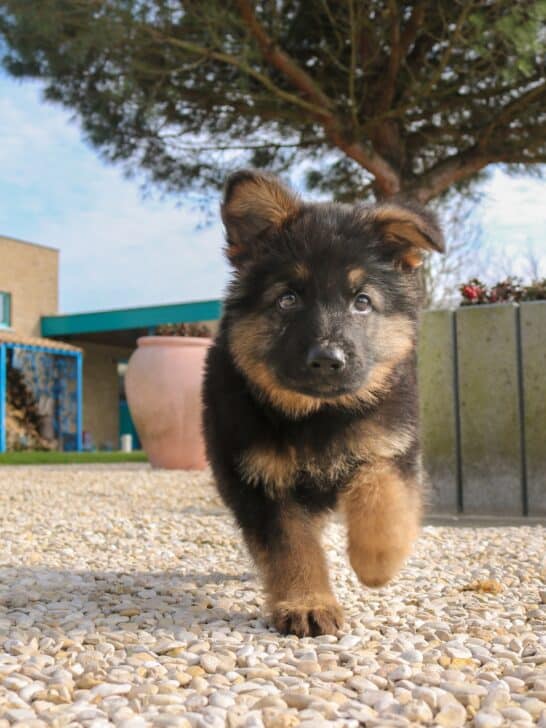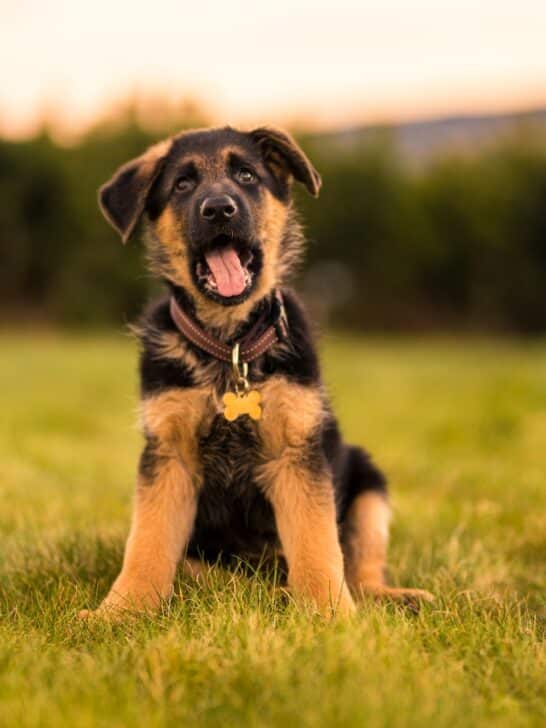Soaking Puppy Food: Why and When to Stop
It’s common for owners and breeders to soak kibble for puppies, making it easier to eat, manipulate in their mouths, and digest.
Over time, puppies transition away from this and are taught to eat normal kibble and whole foods.
How do you know if they are ready for ‘big kid’ food? Let’s take a quick look at everything you need to know to set your pup on the road to solid food correctly.
Why is Puppy Food Soaked?
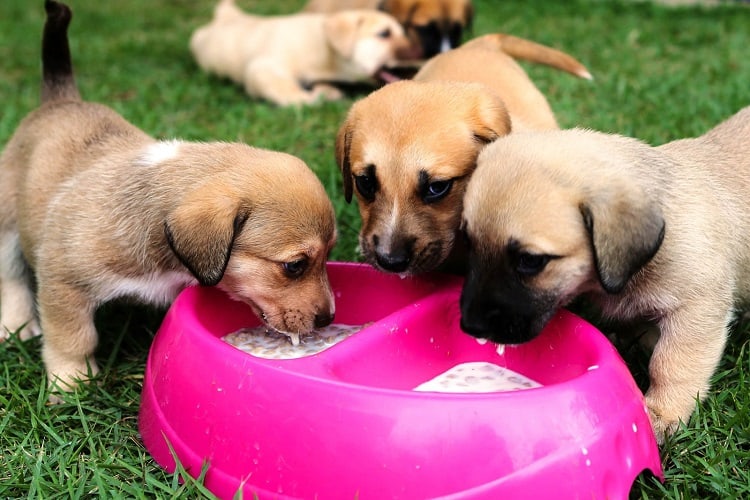
For the first four weeks (or so) of life, puppies drink mom’s milk exclusively. At this point, they start needing more nutrients than milk alone can provide.
The transition from milk to a solid diet is critical to healthy development, but it can be challenging for little mouths.
They’re getting (or may have gotten) a full set of baby teeth, but there’s only so much they can do with them. Even the idea of chewing food is new to them and dry kibble is hard for tiny teeth.
When we soak the food in water, it becomes softer and easier to mash and chew. The heady scent of the ‘gravy’ it creates can also make it more appealing to developing noses.
For unheated food, this can make the difference between appetizing and not. Remember to make sure the pup is getting enough food, as the kibble will swell when wet. Portion it out while dry, for ease.
There are no rules to follow on soaking food, which will depend on the brand, but you don’t want it to start fermenting, as that can lead to gastric issues, or disintegrate.
This happens surprisingly fast, especially in warm weather or in warm indoor environments.
You also want to make a soft ‘gruel’ or mash, not soup! Thirty minutes would be more than enough time for the kibble to become soft enough.
Never keep soaked kibble – throw it out if there’s some left in the dish. It’s a bit wasteful, but health and safety come first.
At What Age Should You Stop Soaking Puppy Food?
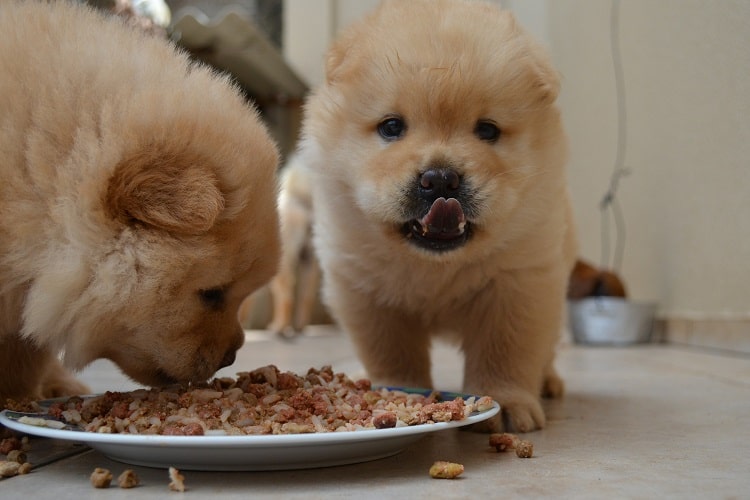
To be honest, you don’t have to stop soaking their food. Adding back moisture to dry kibble can be beneficial, especially for breeds prone to urinary and kidney issues, older dogs, or dogs that don’t drink enough to stay hydrated naturally.
It can also be smart in hot summers when there’s a greater need for hydration. Just remember to dispose of any leftovers quickly, so it doesn’t attract bugs, ferment, or get bacteria like salmonella. Two hours is about the max, which can be shorter in hotter weather.
Luckily most dogs belong to the “clean plate” club, so this shouldn’t be an issue. For this same reason, you should store your dog’s food in a pet-proof and moisture-proof container rather than the original bag, to ensure it doesn’t accidentally get damp and moldy.
Remember that the meat (and gross bits) from a ‘kill’ would naturally provide a dog with a lot of moisture, naturally, that they don’t get from dry kibble. This is why ensuring a clean, safe water source at feeding time is important, too.
While most dogs will naturally regulate their water intake throughout the day, some dogs don’t, and others may need extra hydration due to kidney issues. It depends on the individual dog, and you will learn to ‘read’ your dog’s personality and health with time.
There’s no digestive benefit to soaking kibble once puppies are old enough to manage solid food, as food digests in stomach acid, not water. So it won’t help much with gassy dogs, unfortunately!
It’s often more convenient to teach a dog to eat dry food. It’s neater, and more practical if you travel, have to kennel them, or have a dog sitter to take care of them. You also can’t free-feed wet kibble due to the risks of contamination and bugs.
Your puppy should be fully weaned at about eight weeks, likely the same time you adopt them. Though, they may need some soaked kibble for a bit longer. Never stop soaking abruptly. The transition to solid food should be slow and done with patience.
Slowly reduce the water content of the meal over time, by about 10%. Use that for a few days, then reduce it again.
This avoids tummy trouble, giving them time to adapt to each stage, and helps the dog adapt without being put off by their food. They’re growing, and they need all those nutrients!
It might take them a while to get used to crunchy food, but most dogs make the switch pretty seamlessly. Crunching can even be good for teething.
Usually, by 12 to 16 weeks, you will have a puppy who is happy with dry kibble, but let the dog guide you, and don’t overthink this one. There’s no harm in soaked food as long as you clean it up quickly – and most pups are more than happy to help you with that!
Can Puppies Eat Dry Food?
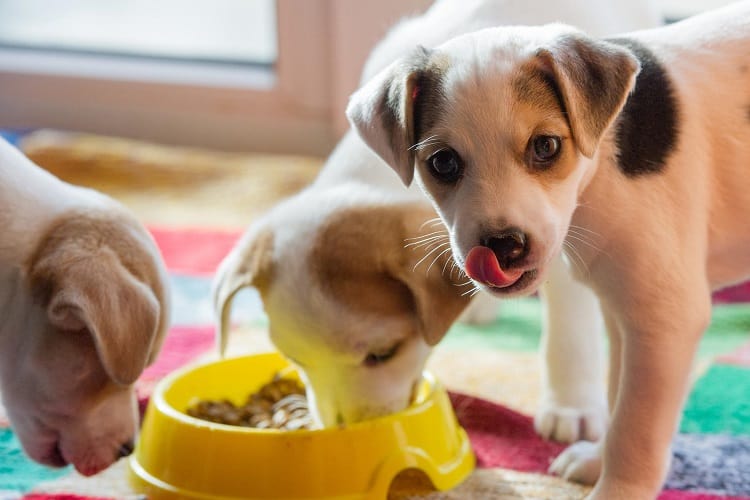
Older puppies will manage dry food easily. You might need to switch to semi-most dog food if you have a breed that gets nasty teething issues, like the Shih Tzu. Most breeds, however, find crunching satisfying as they teethe.
Most dogs will be perfectly safe and happy on dry food from 12 to16 weeks onward. Puppies have very different nutritional needs from adults, so make sure you are feeding them high-quality dry food developed for their needs.
Conclusion
Soaking your puppy’s food is critical to transitioning them from their mom’s milk to a solid food diet.
Over time, however, most owners want to reduce their dog’s reliance on moist kibble and transition to a more convenient dry diet.
With a little care and attention, this can be done pretty easily. Take it slowly, and reduce the amount of water you add over time. You’ll soon have a puppy ready to crunch those kibbles!

























